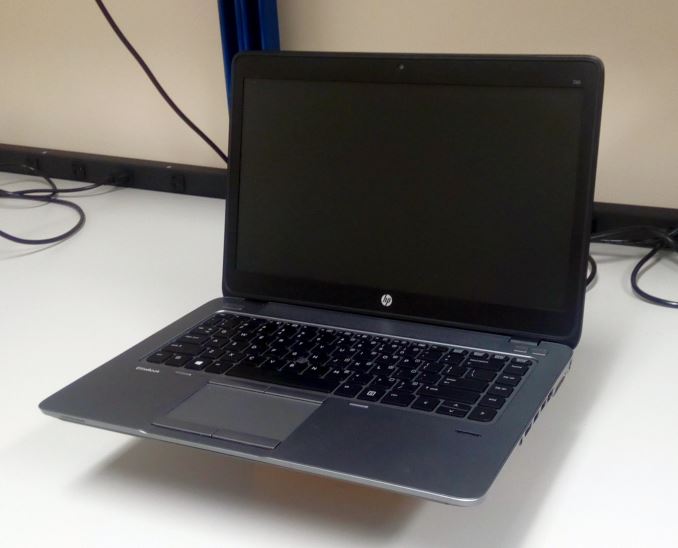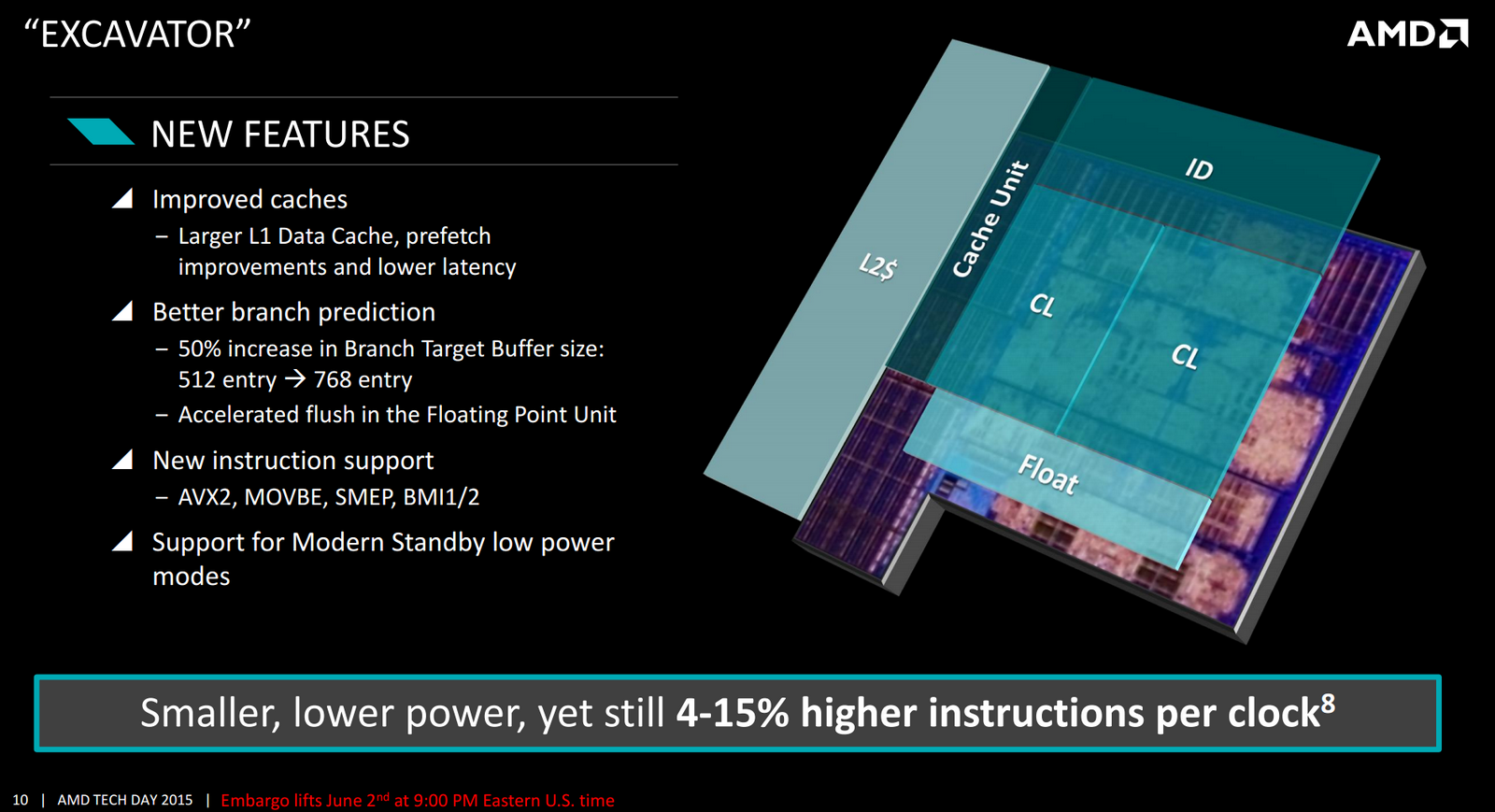Who Controls the User Experience? AMD’s Carrizo Thoroughly Tested
by Ian Cutress on February 4, 2016 8:00 AM ESTNo Room at the Win
The interesting thing about laptop design is that for the most part we are dealing with a number of devices with the same level of power consumption. This means that given sufficient standards, the same laptop shell - be it plastic, aluminium or something a bit more exotic - should be able to house different components that operate at a similar TDP, all with similar battery capacities. Thus if a company gets a ‘win’ with a laptop design, then an equivalent TDP processor from the competition (again, there are other factors involved such as controllers and z-height) should be able to work well in that same device.
But one key differentiator between Intel and AMD however is the consistent level of halo devices available with each manufacturer's hardware. It doesn't take long to find the evolutions of Intel's Ultrabook line that focus on high performance, and other premium devices designed to hit a certain combination of thickness and battery life, such as ASUS' Zenbook line or the Apple Macbook Air. In the tablet space, Intel has had design wins with the Microsoft Surface line as well as others, especially premium devices. These are all high volume, highly advertised product lines available in almost every market and not hard to find. In the case of the three mentioned above, some are household names and all of them are well known in the technical media zeitgeist.

HP Elitebook, one of the more premium designs with AMD inside
However, if AMD is mentioned in a similar vein, it is difficult to draw a single conclusion or the name of a premium or otherwise well-known laptop model from memory unless you happen to either work directly with AMD marketing or you are the product manager at a parner OEM. There have been no design wins or public contracts with AMDs mobile processors, and no big halo products that champion both performance and industrial design in a single device. As a result there has to be an element of questioning here. Are OEMs unwilling to use AMD? Do AMD products have a bad reputation? Is there something inherent with the name or product that makes OEMs reluctant, or users to withhold their purchases? Or is there something fundamentally wrong with the processor? As is often the case, the predicted answer to this question is a mixed bag.
Carrizo over Kaveri
As mentioned previously, Carrizo is the name for the family of APUs that use AMDs fourth iteration of the Bulldozer architecture, Excavator. Carrizo is built on GlobalFoundries' 28nm process node and comes inline with AMDs recent renegotiation of contracts regarding the scale and scope of the APU product line. Carrizo APUs will be available in 15W variants, which reflects the focus of the architecture update as well as the change in metal stack arrangement incorporated for this family to optimize transistor density. Meanwhile the higher-end models will have an available TDP-Up mode of 35W in order to increase performance, although this is at the discretion of the OEM. AMD for their part has already stated that their primary use case for Carrizo is at 15W, as 35W is the point where the Carrizo's power optimizations aren't quite as efficient and the performance of previous generation APUs will intersect with Carrizo (when talking raw CPU, rather than other benefits Carrizo has).
In launching Carrizo, AMD was clear on the target market for this APU - laptops in the $400-$700 range. It has been pointed out by media and analysts that this market segment represents an opportunity for AMD to fit between Intel's low power/high performance/high cost Core-M line of processors, the low power/low performance/low cost Atom line and the higher power/medium cost Core i3. According to AMD, this segment represents 40% of all laptop sales, covering users who want more than a budget device but something below the high costs of a premium device.
Meanwhile AMDs secondary aim with Carrizo is to offer premium level performance in certain applications at a lower price point by using Carrizo's stance as the first CPU architecture to be ratified against the heterogeneous system architecture (HSA) standards. As a result, AMD had been working with software developers in order to leverage HSA benefits in specific code bases and subsequently improve in performance, particularly with software of widespread importance, such as Adobe and LibreOffice.
Carrizo is a true system-on-chip (SoC), integrating the CPU, the GPU, and the input/output hub all on one piece of silicon (and thus one package). This leads to several direct benefits - reducing the power consumption of the I/O hub by bringing it down to the same process node as the main processor, allowing different areas of the SoC to be power gated under a single control system rather than recreating power delivery networks around the system, and ease of use when it comes to HSA requiring less data to travel around external buses.
AMDs main competitor in the mobile processor space, disregarding tablets for the moment and devices like Surface RT/Chromebook Pixel, is Intel. Intel, like AMD, leverages an x86 CPU design with integrated graphics on the same die. Thanks to a combination of many years of experience with graphics and designs intentionally favoring high performance integrated GPUs, AMDs main positive point of performance in recent generations has been the integrated graphics arena, where they win out typically in terms of graphics performance/cost and graphics performance/power metrics. Thus a number of improvements to Carrizo over previous architectures relate to graphics use - either using it more with HSA or offloading certain workloads to dedicated IP to keep more of the SoC at an idle state.
Carrizo’s design allows AMD to add two more graphics compute units (+33%) at 15W compared to Kaveri at a similar frequency, which combined with IPC increases in the processor has led to some interesting claims for performance. These claims have been picked up by casual readers and OEMs alike.











175 Comments
View All Comments
ImSpartacus - Friday, February 5, 2016 - link
Holy shit, I haven't seen that many pages in a long time. You don't see this much content very often. Gotta love dat chorizo.close - Friday, February 5, 2016 - link
ImSpartanus, they're just writing a comprehensive article. I'm sure they put in good work with all of them.ImSpartacus - Friday, February 5, 2016 - link
I think this article provides a pretty delicate and nuanced treatment of chorizo and its place in the market (both potential & actual). There's no doubt that the circumstances demanded it. This was not business as usual and I'm glad Anandtech recognized the need for that additional effort.We're fooling ourselves if we pretend that any journalistic entity puts the sane amount of effort into every project. We're talking about living, breathing humans, not robots.
fmcjw - Friday, February 5, 2016 - link
I found the language convoluted, verbose, and difficult to read, compared to, say, Anand's straightforward and logical writing:"Nonetheless, Intel’s product line is a sequence of parts that intersect each other, with low end models equipped with dual core Pentiums and Celerons, stretching into some i3 and i5 territory while still south of $1000. In this mix is Core M, Intel’s 4.5W premium dual core parts found in devices north of $600."
"south of/north of"... can't you just put in "below/above"? And all that "intersecting of parts", can't you just say from the Atom to Pentiums, Celerons, i3's, and i5's....
The whole thing reads like they're paying you to score a high word count. Lots of information to extract here, but it can be 3 pages shorter and take half as long to read.
Cellar Door - Friday, February 5, 2016 - link
That is why Anandtech has video adds on their main page - designed for people like you. Who simply lack reading comprehension past 8th grade and find it hard to understand. Just watch watch the video on how to loose weight that auto-plays on the side.Or... try Tom's Hardware - they cater to your demographic.
ImSpartacus - Friday, February 5, 2016 - link
There's no question that Anand had a powerful way of writing that was uniquely simple yet educated you nevertheless. And for a layman that reads this sort of stuff to learn new information, that's very attractive and I kinda miss it (along with Klug).However, I give Ian a pass because he at least attempted to use other brand of conveying his ideas. In certain sections he used special table-like fitting to separate "parallel" sections/stances so that the rader would be more apt to compare them. So there's at least some effort, though he surely could do better.
10basetom - Saturday, February 6, 2016 - link
fmcjw does have a point, but in all fairness it is much harder to explain techical stuff in layman terms than it is to be long-wordy. Carl Sagan was the master of it on TV, and Anand was excellent at it on paper.JMC2000 - Sunday, February 7, 2016 - link
I didn't find anything wrong with the language Ian used, as this is piece is still on a technical level, but can be understood by the layman that knows a bit more than just what the stickers on the outside tell.To me, the phrase "parts that intersect each other" lays out that there is a myriad of options where configurations overlap, where as saying "from the Atom to Pentiums, Celerons, i3s and i5s" indicates that there is a pricing structure that is related to general CPU performance, which there really isn't when it comes to low-end machines.
plonk420 - Monday, February 8, 2016 - link
"south of/north of" sounds better than "greater than/less than," which is more correct than "below/above"Sushisamurai - Thursday, February 11, 2016 - link
yeah, colorful language is nice. Dumbing down adjectives or descriptions can often construe the true message IMO. This way, it paints a more descriptive/colorful picture.Keep up the good work Ian.